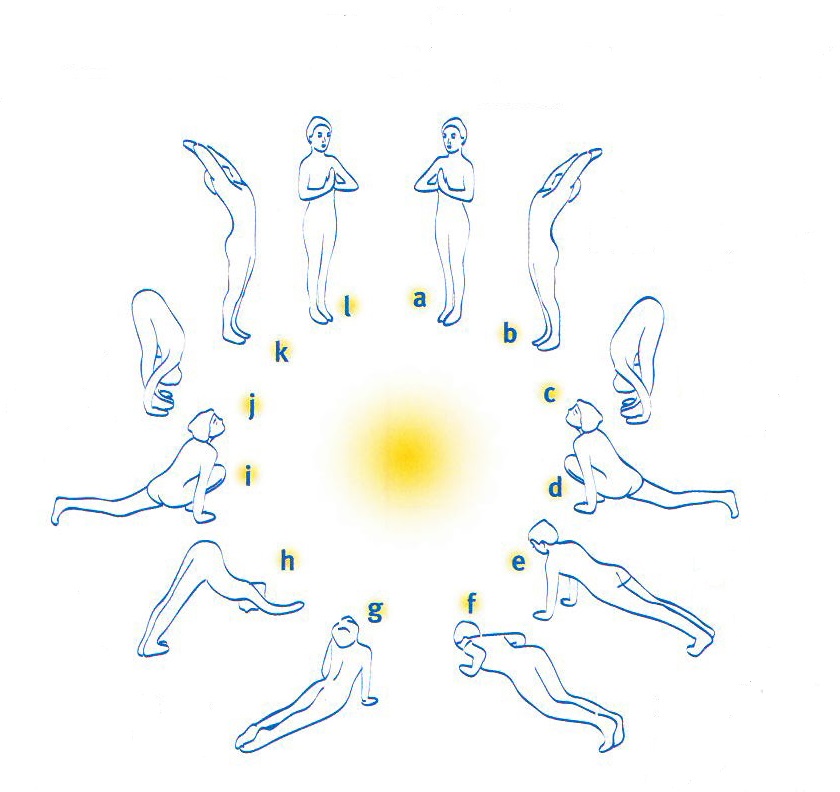Yoga in Maharishi Ayurveda
The word yoga has various meanings, including union and stillness. The term yoga traditionally refers to a system of exercises that is intended to establish contact or connection with the individual being of the human being, with his or her self. It includes not only the physical exercises (asanas) known in the West, but also instructions for ethical behaviour and a way of life that focuses on the orientation towards self-realisation. Yoga stands for health, happiness and fulfilment in life. Fulfilling the spiritual goals of man is the path and task of yoga. The health aspect of meditation, asanas and an ethical-moral way of life is a positive by-product of this, which has been given more prominence in the West than the spirituality of yoga. The two cannot be separated from each other. A person's attitude of mind, his orientation and way of life directly influence his physiology, because all processes of consciousness have mental, psychological and physical correspondences. This is why Achara-Rasayana, the rejuvenation therapy through correct behaviour, is also given so much importance in Ayurveda.
The Yoga Sutras of Maharishi Patanjali
The system of yoga was summarised by the sage Maharishi Patanjali, the so-called Yoga Sutra. Patanjali's dates of life are not exactly known, he is said to have lived around 200 BC and he is considered the founder of the yoga system based on the Sankhya philosophy. The essence of his teaching says: The liberation of the mind from the fetters of space and time, resulting in an inner calm, is the necessary condition for the vision of truth, which the yoga sutras strive to convey.
Yoga asanas develop the personality
Within the yoga system there is a great variety of exercises and methods for personality development, asanas - postures - are a part of them. Asanas are used in Maharishi Ayurveda as exercises that restore body-mind coordination and integrate all functional levels of the body. These exercises work by stimulating vital points in the body, called 'Marmas' in Ayurveda. Marmas are like switchboards in the body that are connected to all other parts. They connect consciousness with the body, contain psychosomatic qualities and are interconnected via the so-called "nadis" - energy pathways. Many "Marmas" correspond to the acupuncture points of traditional Chinese medicine, the "Nadis" to the meridians. Obstacles in the physiology can be removed from the human physiology by properly stretching and working these vital points. The asanas are therefore postures that work on a psychosomatic level. They affect the internal movements of the organs, the body currents of blood, lymph, neurotransmitters and other transmitters. If one wants to use the full range of Ayurveda, one needs not only the herbal remedies and massages, the rasayanas and cleansing cures, but also the exercises of yoga. Through regular practice, an inner experience of the body's functions can take place and thus learn what connects the outer posture with the inner posture. In Maharishi Ayurveda, the daily practice of yoga asanas is followed by five minutes of breathing exercises and about 20 minutes of TM.
Tips: Here's what you should keep in mind
As in every part of Maharishi Ayurveda, effortlessness is the key to success. While performing the asanas, it is important to never exert yourself by trying to do more than your body is already capable of. Muscles should only be stretched as far as is comfortable for the body. With time, more and more flexibility will develop in the musculoskeletal system.
Positions should only be held for a few seconds. Breathing during the exercises is easy and natural.
Wear comfortable and loose clothing. Bare feet on a non-slip surface are recommended.
The exercises should not be done with a full stomach. This means waiting at least two or three hours after a meal before practising. Exercise should also not be done 30 minutes before eating/drinking. In the morning, one should definitely practise before breakfast. Empty bladder and bowels before practising.
If you notice that a certain part of the body cannot be bent, do not force the bend by rocking or jerking. Just bend as far as is easy without trying to stretch any further.
When performing the postures, one should very easily allow the consciousness to be at the point of the body where it is being stretched. By practising the postures in a quiet and undisturbed place, the consciousness will automatically focus on that part of the body. No special concentration is necessary.
Sitting position: Face east in the morning, face west or north in the evening.
The Sun Salutation: Suryanamaskara

One of the most beautiful yoga asanas. The synchronisation of breathing and movement makes it a good concentration exercise. In addition to stretching the front and back of the body, it activates all the joints, stimulates breathing, circulation and digestion and is therefore ideal for starting the day:
- Place hands together in front of the chest and exhale deeply.
- Inhale, move arms up and back in an arc, creating a slight backbend.
- Exhale, bend the upper body forward, place hands beside the feet on the floor (or on the knees).
- Inhale, stretch the right leg backwards.
- Now also stretch the other leg backwards and press the back upwards.
- Exhale, lower the knees, chest and forehead to the floor.
- Raise the head and upper body without lifting the pelvis - inhale.
- Slowly raise the pelvis and back until your ears are level with your upper arms - exhale.
- Swing the right knee forward, inhaling as you lift the head.
- Place the left foot next to the right and press the pelvis up until the torso is bent - exhale.
- Inhaling, move the arms up and back in an arc, creating a slight backbend as at the beginning of the exercise.
- Place hands together in front of the chest and exhale deeply.
- Breathing exercise - Pranayama
Yoga classes
Yoga courses are offered regularly in our house. The current dates can be found under Events".


We look forward to your feedback!